

What is Cost Assignment?
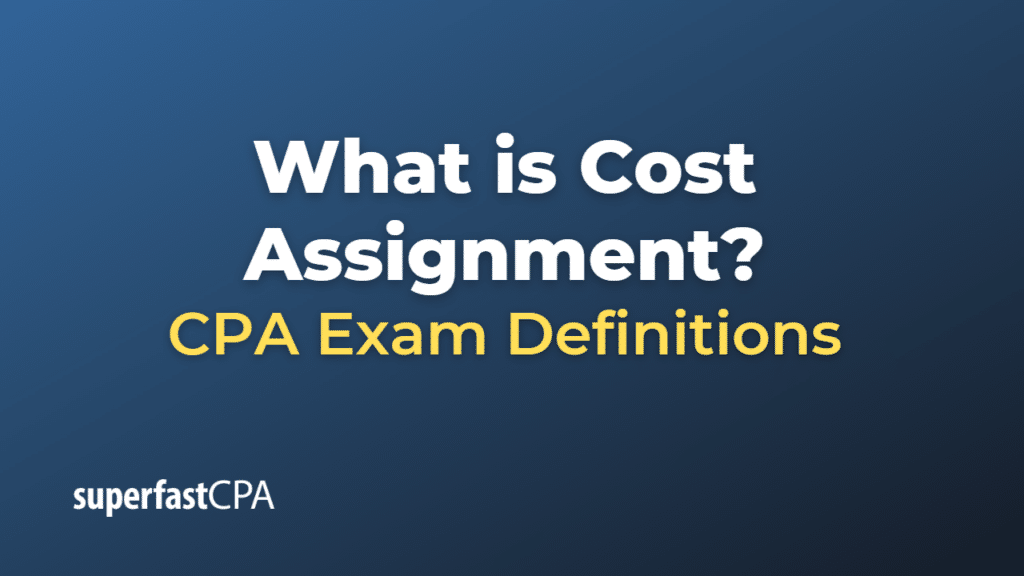
Share This...
Cost assignment.
Cost assignment is the process of associating costs with cost objects, such as products, services, departments, or projects. It encompasses the identification, measurement, and allocation of both direct and indirect costs to ensure a comprehensive understanding of the resources consumed by various cost objects within an organization. Cost assignment is a crucial aspect of cost accounting and management accounting, as it helps organizations make informed decisions about pricing, resource allocation, budgeting, and performance evaluation.
There are two main components of cost assignment:
- Direct cost assignment: Direct costs are those costs that can be specifically traced or identified with a particular cost object. Examples of direct costs include direct materials, such as raw materials used in manufacturing a product, and direct labor, such as the wages paid to workers directly involved in producing a product or providing a service. Direct cost assignment involves linking these costs directly to the relevant cost objects, typically through invoices, timesheets, or other documentation.
- Indirect cost assignment (Cost allocation): Indirect costs, also known as overhead or shared costs, are those costs that cannot be directly traced to a specific cost object or are not economically feasible to trace directly. Examples of indirect costs include rent, utilities, depreciation, insurance, and administrative expenses. Since indirect costs cannot be assigned directly to cost objects, organizations use various cost allocation methods to distribute these costs in a systematic and rational manner. Some common cost allocation methods include direct allocation, step-down allocation, reciprocal allocation, and activity-based costing (ABC).
In summary, cost assignment is the process of associating both direct and indirect costs with cost objects, such as products, services, departments, or projects. It plays a critical role in cost accounting and management accounting by providing organizations with the necessary information to make informed decisions about pricing, resource allocation, budgeting, and performance evaluation.
Example of Cost Assignment
Let’s consider an example of cost assignment at a bakery called “BreadHeaven” that produces two types of bread: white bread and whole wheat bread.
BreadHeaven incurs various direct and indirect costs to produce the bread. Here’s how the company would assign these costs to the two types of bread:
- Direct cost assignment:
Direct costs can be specifically traced to each type of bread. In this case, the direct costs include:
- Direct materials: BreadHeaven purchases flour, yeast, salt, and other ingredients required to make the bread. The cost of these ingredients can be directly traced to each type of bread.
- Direct labor: BreadHeaven employs bakers who are directly involved in making the bread. The wages paid to these bakers can be directly traced to each type of bread based on the time spent working on each bread type.
For example, if BreadHeaven spent $2,000 on direct materials and $1,500 on direct labor for white bread, and $3,000 on direct materials and $2,500 on direct labor for whole wheat bread, these costs would be directly assigned to each bread type.
- Indirect cost assignment (Cost allocation):
Indirect costs, such as rent, utilities, equipment maintenance, and administrative expenses, cannot be directly traced to each type of bread. BreadHeaven uses a cost allocation method to assign these costs to the two types of bread.
Suppose the total indirect costs for the month are $6,000. BreadHeaven decides to use the number of loaves produced as the allocation base , as it believes that indirect costs are driven by the production volume. During the month, the bakery produces 3,000 loaves of white bread and 2,000 loaves of whole wheat bread, totaling 5,000 loaves.
The allocation rate per loaf is:
Allocation Rate = Total Indirect Costs / Total Loaves Allocation Rate = $6,000 / 5,000 loaves = $1.20 per loaf
BreadHeaven allocates the indirect costs to each type of bread using the allocation rate and the number of loaves produced:
- White bread: 3,000 loaves × $1.20 per loaf = $3,600
- Whole wheat bread: 2,000 loaves × $1.20 per loaf = $2,400
After completing the cost assignment, BreadHeaven can determine the total costs for each type of bread:
- White bread: $2,000 (direct materials) + $1,500 (direct labor) + $3,600 (indirect costs) = $7,100
- Whole wheat bread: $3,000 (direct materials) + $2,500 (direct labor) + $2,400 (indirect costs) = $7,900
By assigning both direct and indirect costs to each type of bread, BreadHeaven gains a better understanding of the full cost of producing each bread type, which can inform pricing decisions, resource allocation, and performance evaluation.
Other Posts You'll Like...
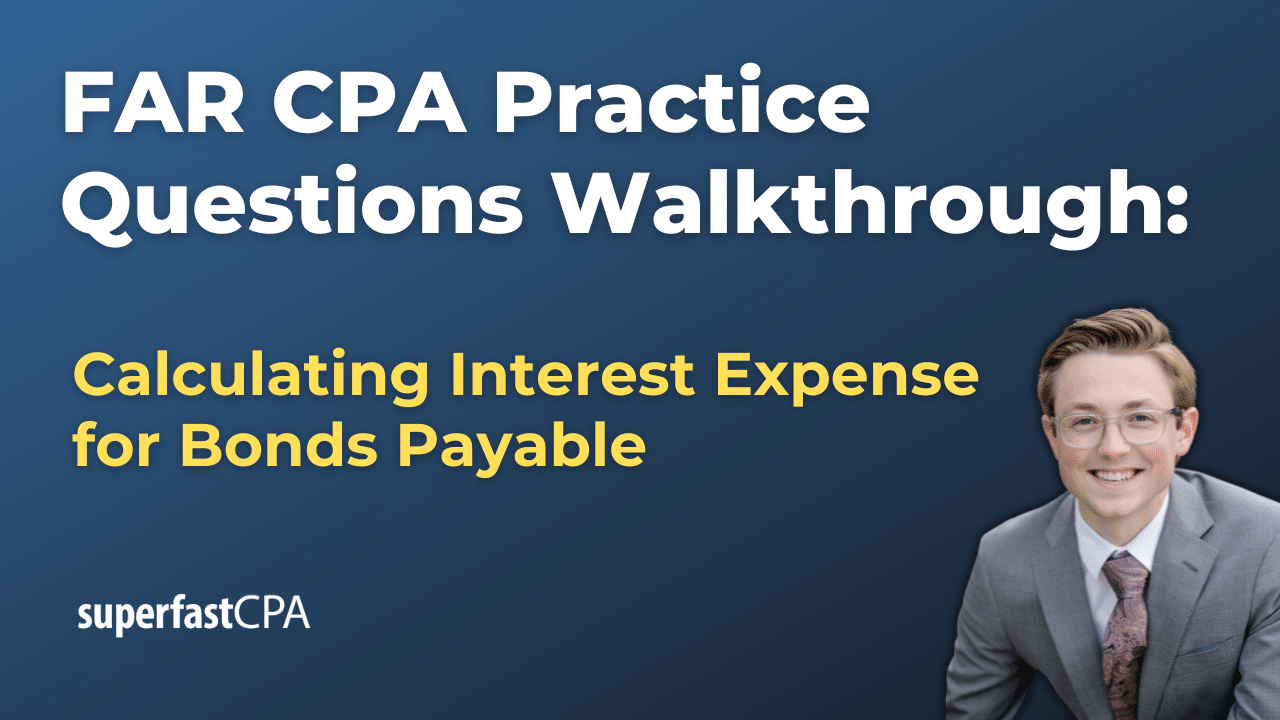
FAR CPA Practice Questions: Calculating Interest Expense for Bonds Payable
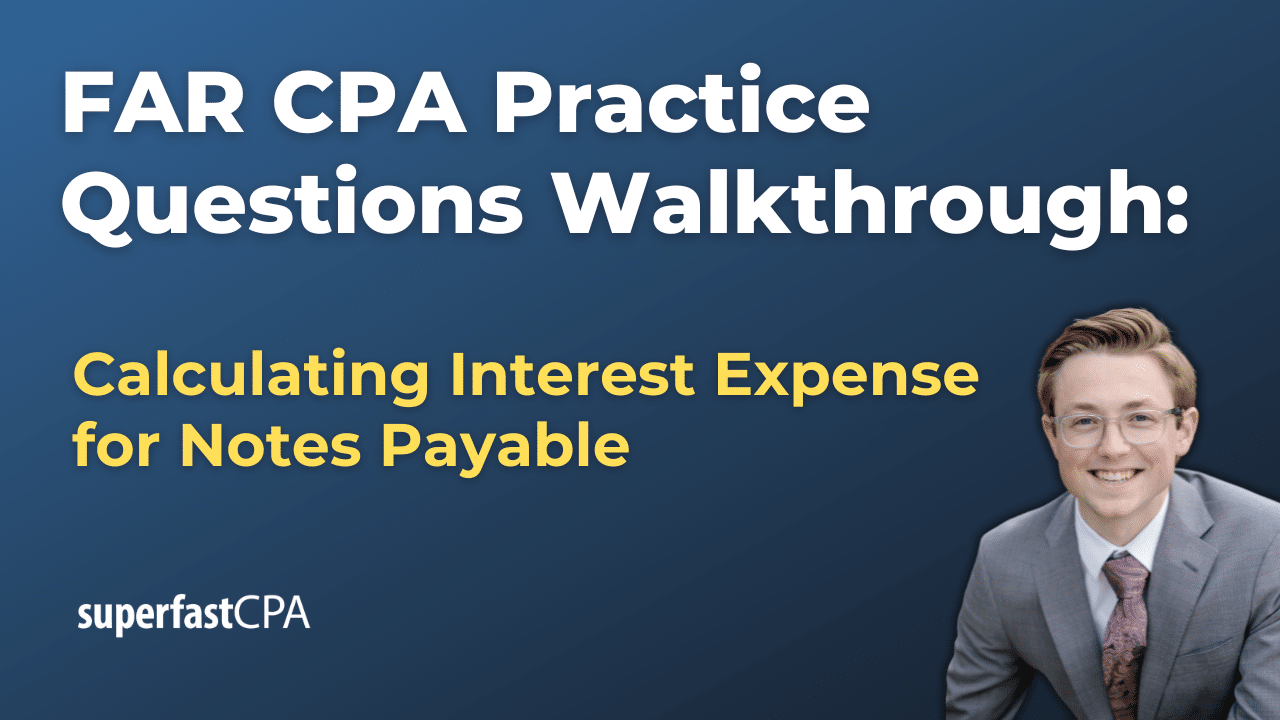
FAR CPA Practice Questions: Calculating Interest Expense for Notes Payable
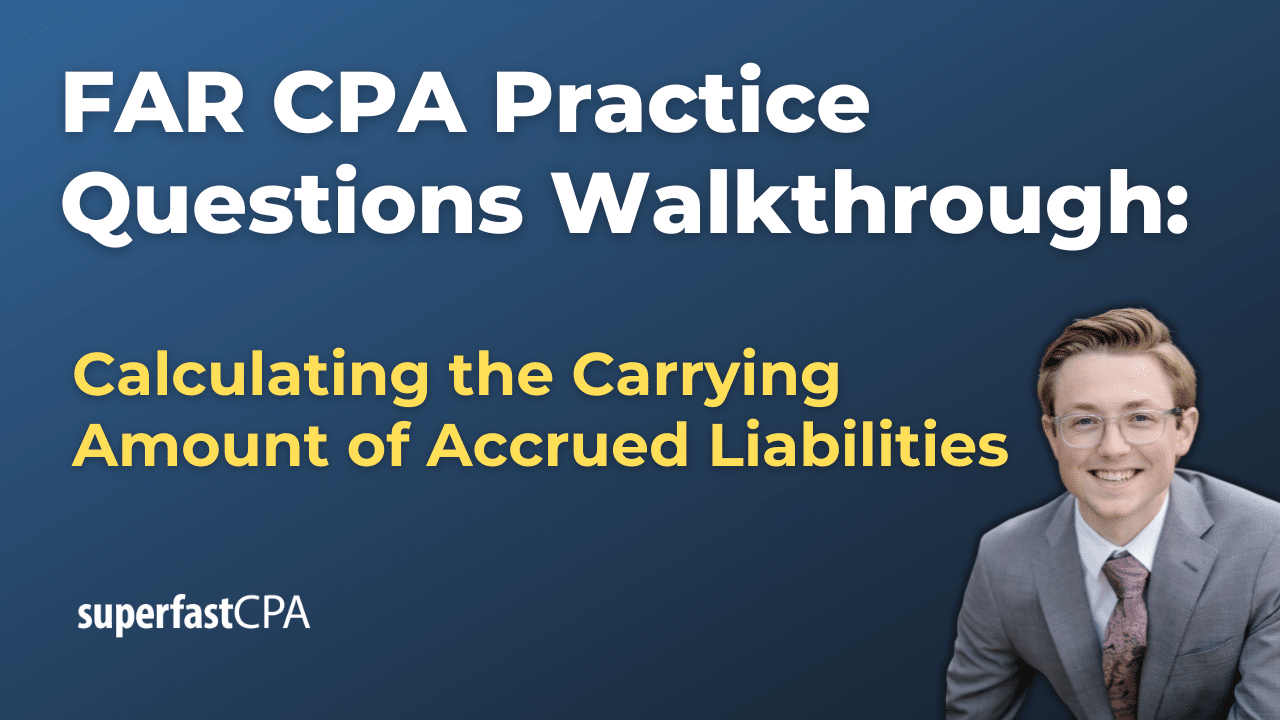
FAR CPA Practice Questions: Calculating the Carrying Amount of Accrued Liabilities
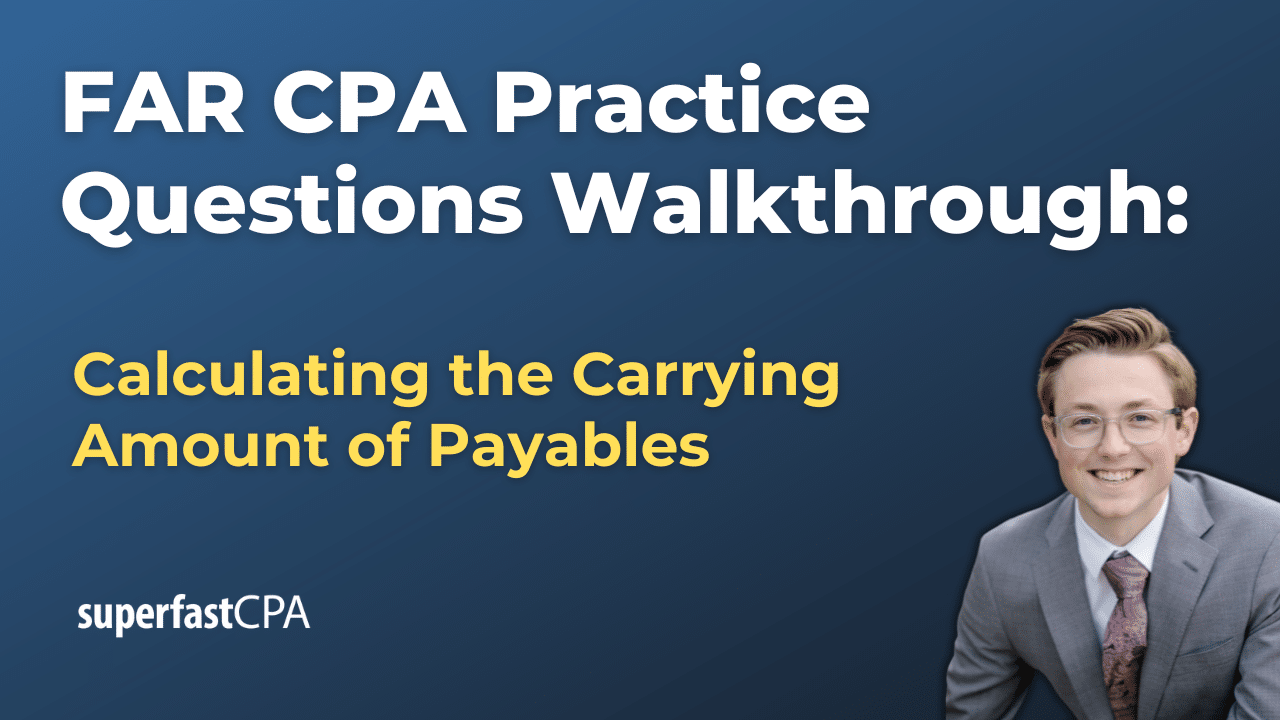
FAR CPA Practice Questions: Calculating the Carrying Amount of Payables

FAR CPA Practice Questions: Calculating the Carrying Amount of Finite-Lived Intangible Assets

FAR CPA Practice Questions: Calculating the Carrying Amount of Equity Method Investments
Helpful links.
- Learn to Study "Strategically"
- How to Pass a Failed CPA Exam
- Samples of SFCPA Study Tools
- SuperfastCPA Podcast

How Liam Passed His CPA Exams by Tweaking His Study Process

The 5 Critical CPA Exam Study Strategies You Need to Be Doing


Scoring in the High 90s While Working Full-Time? How Scott Passed His CPA Exams

How Studying from Her Phone Helped Meaghan Pass the CPA Exams

How Ron Passed His CPA Exams by Going All In

From 8hrs a Day to 2hrs a Day: How Matt Passed the CPA Exams
Want to pass as fast as possible, ( and avoid failing sections ), watch one of our free "study hacks" trainings for a free walkthrough of the superfastcpa study methods that have helped so many candidates pass their sections faster and avoid failing scores....

Make Your Study Process Easier and more effective with SuperfastCPA
Take Your CPA Exams with Confidence
- Free "Study Hacks" Training
- SuperfastCPA PRO Course
- SuperfastCPA Review Notes
- SuperfastCPA Audio Notes
- SuperfastCPA Quizzes
Get Started
- Free "Study Hacks Training"
- Read Reviews of SuperfastCPA
- Busy Candidate's Guide to Passing
- Subscribe to the Podcast
- Purchase Now
- Nate's Story
- Interviews with SFCPA Customers
- Our Study Methods
- SuperfastCPA Reviews
- CPA Score Release Dates
- The "Best" CPA Review Course
- Do You Really Need the CPA License?
- 7 Habits of Successful Candidates
- "Deep Work" & CPA Study
All Subjects
Cost Accounting
Study guides for every class, that actually explain what's on your next test, cost assignment, from class:.
Cost assignment is the process of allocating costs to specific cost objects, such as products, departments, or projects, in order to accurately reflect the expenses associated with each object. This practice is crucial for understanding profitability, managing budgets, and making informed financial decisions. It enables organizations to trace costs directly to their sources, ensuring a more precise financial picture and effective resource management.
congrats on reading the definition of cost assignment . now let's actually learn it.
5 Must Know Facts For Your Next Test
- Cost assignment is essential for determining product pricing and profitability by ensuring all relevant costs are considered.
- There are various methods for cost assignment, including direct tracing for direct costs and allocation for indirect costs.
- Accurate cost assignment helps in budgeting and forecasting by providing a clearer understanding of where resources are being utilized.
- Cost assignment techniques can vary based on the type of industry and the nature of the cost objects being analyzed.
- Proper cost assignment enhances decision-making processes by providing management with detailed insights into cost behavior and performance.
Review Questions
- Cost assignment plays a significant role in pricing strategies by ensuring that all relevant costs associated with producing a product are accounted for. By accurately allocating both direct and indirect costs to each product, organizations can set prices that cover these expenses while also generating profit. Understanding the total cost structure allows businesses to make informed pricing decisions that reflect market conditions and competition.
- Direct costs are expenses that can be traced directly to a specific cost object, such as raw materials used in manufacturing a product. In contrast, indirect costs cannot be easily attributed to one specific object and often include expenses like utilities or administrative salaries. Effective cost assignment requires distinguishing between these two types of costs to ensure accurate financial reporting and resource allocation, allowing organizations to understand true profitability.
- Inaccurate cost assignment can lead to significant misrepresentations of an organization's financial health. If costs are misallocated or improperly traced, it may result in setting incorrect prices, misjudging profitability, or making poor budgeting decisions. This could ultimately hinder strategic planning and resource allocation, leading to wasted resources and missed opportunities for growth. Organizations must ensure that their cost assignment methods are robust and reliable to support sound financial decision-making.
Related terms
cost object : Any item for which costs are measured and assigned, including products, services, projects, or departments.
direct costs : Costs that can be directly traced to a specific cost object, such as raw materials used in production.
indirect costs : Costs that cannot be directly traced to a specific cost object and must be allocated across multiple objects, such as overhead expenses.
" Cost assignment " also found in:
Subjects ( 2 ).
- Managerial Accounting
- Strategic Cost Management
© 2024 Fiveable Inc. All rights reserved.
Ap® and sat® are trademarks registered by the college board, which is not affiliated with, and does not endorse this website..

COMMENTS
Cost assignment is a crucial aspect of cost accounting and management accounting, as it helps organizations make informed decisions about pricing, resource allocation, budgeting, and performance evaluation.
Definition. Cost assignment is the process of allocating costs to specific cost objects, such as products, services, or activities, based on the consumption or usage of resources.
Cost assignment is the process of allocating costs to specific cost objects, such as products, services, or departments, in order to accurately determine the total costs associated with those …
Cost assignment is the process of allocating costs to specific cost objects, such as products, departments, or projects, in order to accurately reflect the expenses associated with each …
Cost Allocation or cost assignment is the process of identifying and assigning costs to the various cost objects. These cost objects could be those for which the company needs to find out the cost separately. A few …
The procedures by which direct or indirect costs are charged to or made the responsibility of particular cost centres, and ultimately charged to the products manufactured or services …
Cost allocation is the process of identifying, accumulating, and assigning costs to costs objects such as departments, products, programs, or a branch of a company. It involves identifying the cost objects in a company, identifying the …